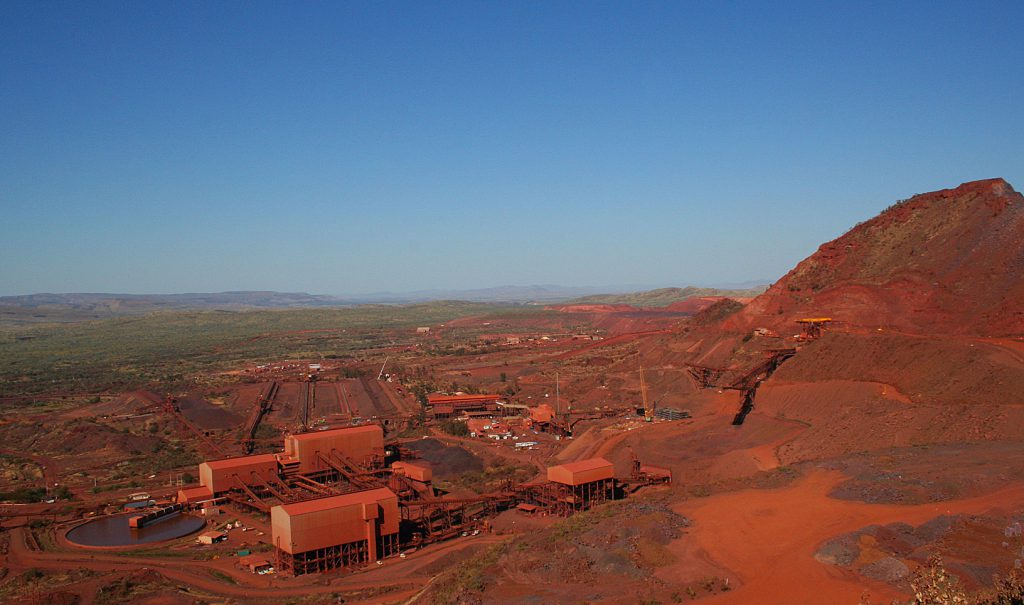
Rio Tinto (ASX, LON, NYSE:RIO) warned on Wednesday that the coronavirus outbreak may create challenging conditions over the next six months, with more disruptions to global supply chains and potential delays to projects in Australia.
The miner’s warning comes on the heels of its best underlying earnings since 2011, buttressed by a sizable jump in iron ore prices last year.
Rio Tinto is the last of the Australian iron ore giants to report in what has been a solid earnings season, and like the others it posted a lighter dividend than investors were expecting.
Underlying earnings for the full year ended Dec. 31 climbed 18% to $10.37 billion. It was slightly under a consensus estimate of $10.40 billion by 17 analysts compiled by research firm Vuma Financial.
“It’s an improved result on 2018, driven almost entirely by the higher iron ore price,” said investment analyst Brenton Saunders of fund manager Pendal Group in Sydney.
“If anything the dividend is a bit light relative to free cash flow, which I suspect is partly related to…the coronavirus. Then they’d want to have a little bit more of a buffer.”
The Anglo-Australian miner declared a final dividend of $2.31 per share, higher than $1.8 per share in 2018, but lower than consensus of $2.40, and it did not announce a special final dividend.
Underlying earnings from iron ore, which accounts for about 85% of Rio’s underlying earnings, surged 48% to $9.64 billion in the year.
So far this year, benchmark iron ore futures on China’s Dalian Commodity Exchange have dipped 1.4%, plunging in late January on worries over a slump in demand due to the outbreak but then recovering in recent weeks on expectations for more stimulus.
“Today, our iron ore books are full. But we are likely to see some short-term impact such as on supply chains and possibly in provisional services from Chinese suppliers”
Rio Tinto Chief Executive Jean-Sébastien Jacques
“Today, our iron ore books are full. But we are likely to see some short-term impact such as on supply chains and possibly in provisional services from Chinese suppliers,” Chief Executive Jean-Sébastien Jacques told reporters in a teleconference.
Jacques said Rio was assessing the potential for delays to its projects from any disruptions at Chinese equipment suppliers and would inform the market of any change “in coming weeks.”
“There could be (an impact) on all projects across the industry because lots of fabrication now is coming from China.”
Rio Tinto, which took the title of the world’s biggest iron ore miner from Vale in 2019, is building its $2.6 billion Koodaideri iron ore mine in Western Australia, and was also planning to start construction in the first half of 2020 for mining new deposits at Tom Price, in the same region.
The coronavirus outbreak, while detrimental to short-term demand, may see Beijing unleash further measures to boost spending on steel-intensive sectors such as construction and infrastructure.
“The Chinese government has many possible stimulus measures at its disposal. And we expect them to act,” Jacques added.
Last week, the world’s biggest miner, BHP flagged a hit to demand if the fallout extended beyond March.
Jacques also said that Rio’s Australian aluminum business was on “thinner ice” than in August when it said it was in discussions with energy providers and the Australian government to ensure the “long term viability” of the assets.
The story is similar for its hydro-powered New Zealand smelter, despite its green credentials, where discussions with its energy provider continue, Jacques said. Its fate is set to be revealed in the next month.
On copper, Rio said investors could expect first production from what is shaping up to be a globally significant copper find at its Winu project in Western Australia as soon as 2023.
Rio also pledged $1 billion on climate related spending over the next five years as it updated its climate strategy, and said that it would release an updated review of industry lobby groups and their position on climate change in the next week.
(By Melanie Burton and Nikhil Nainan)
Comments